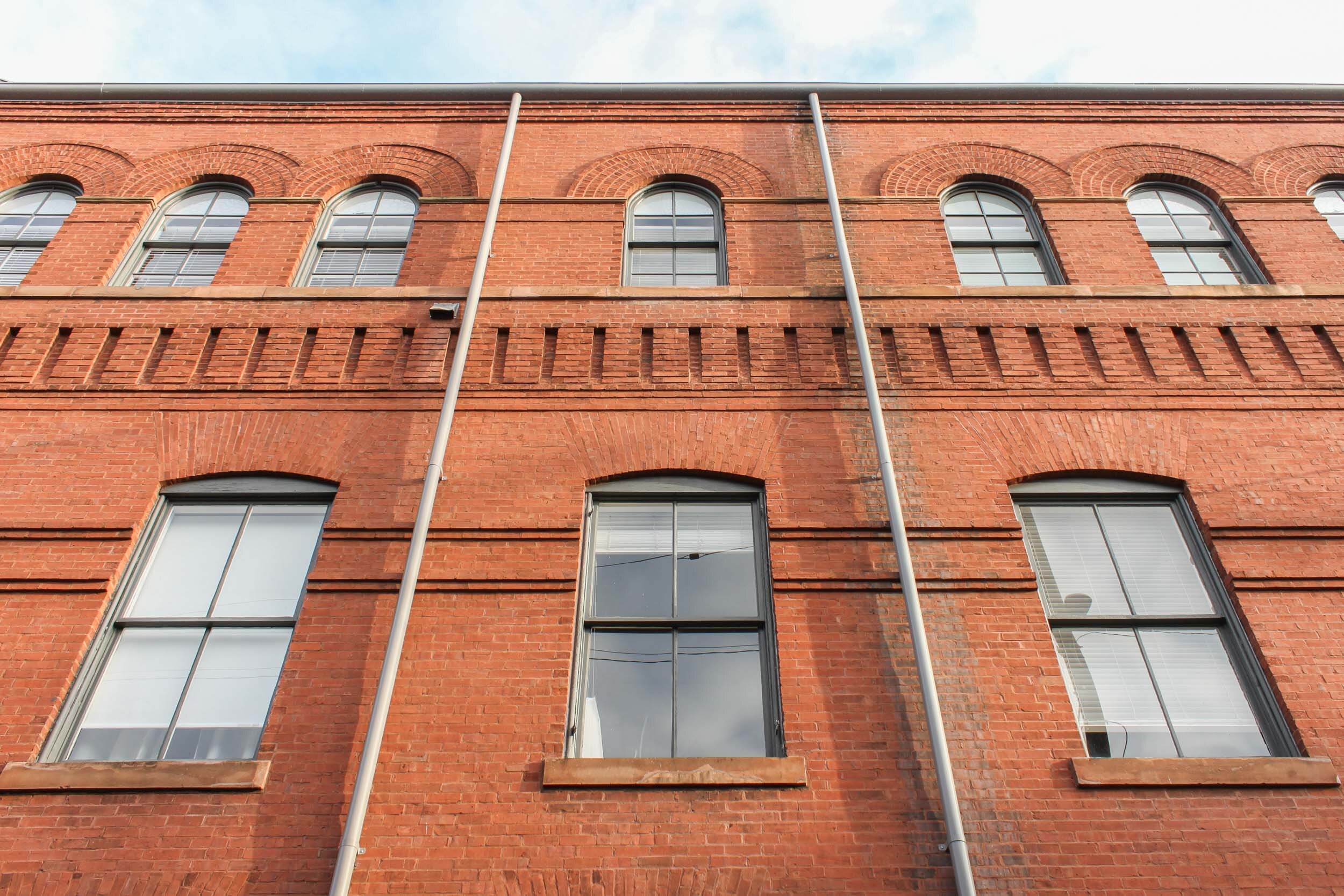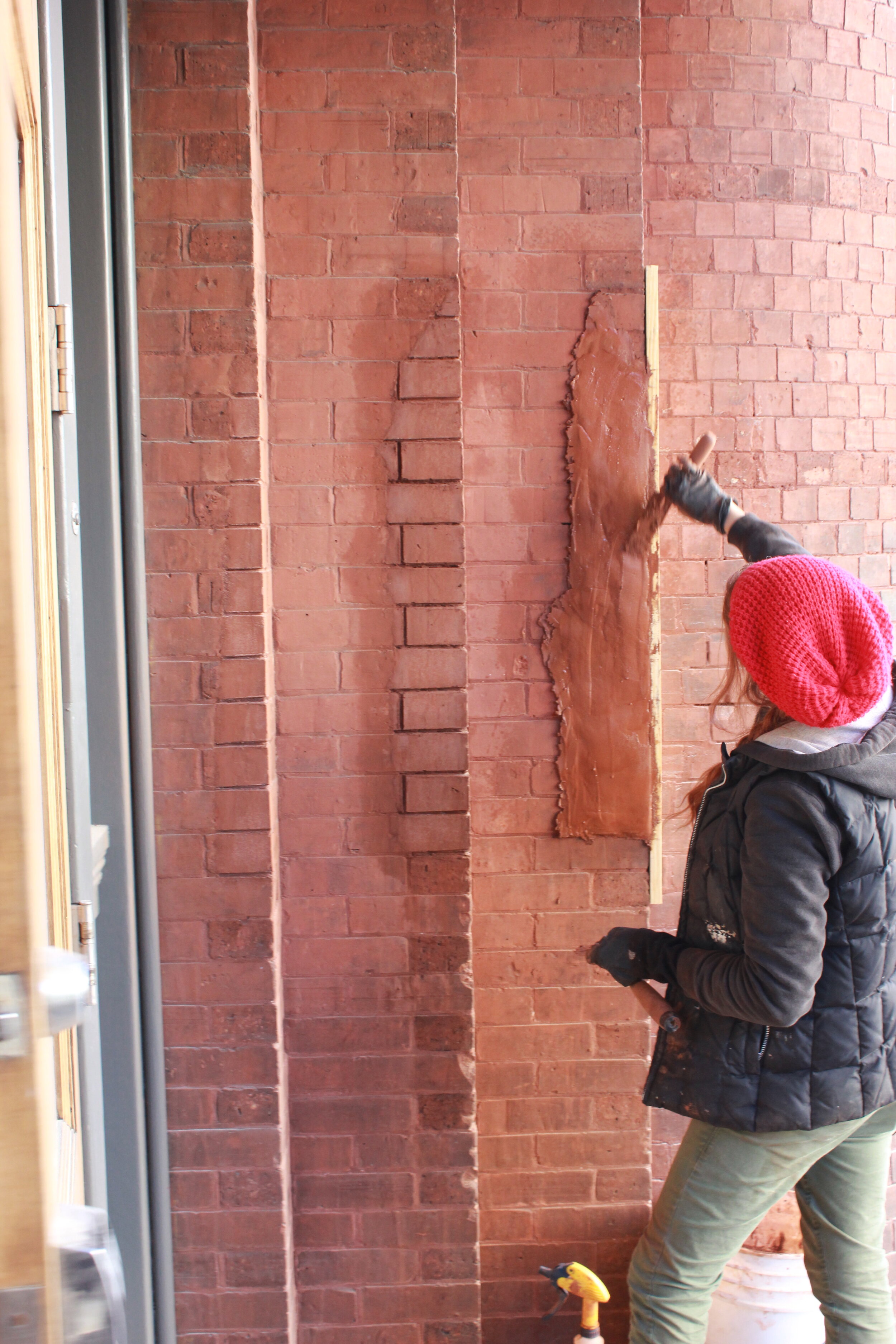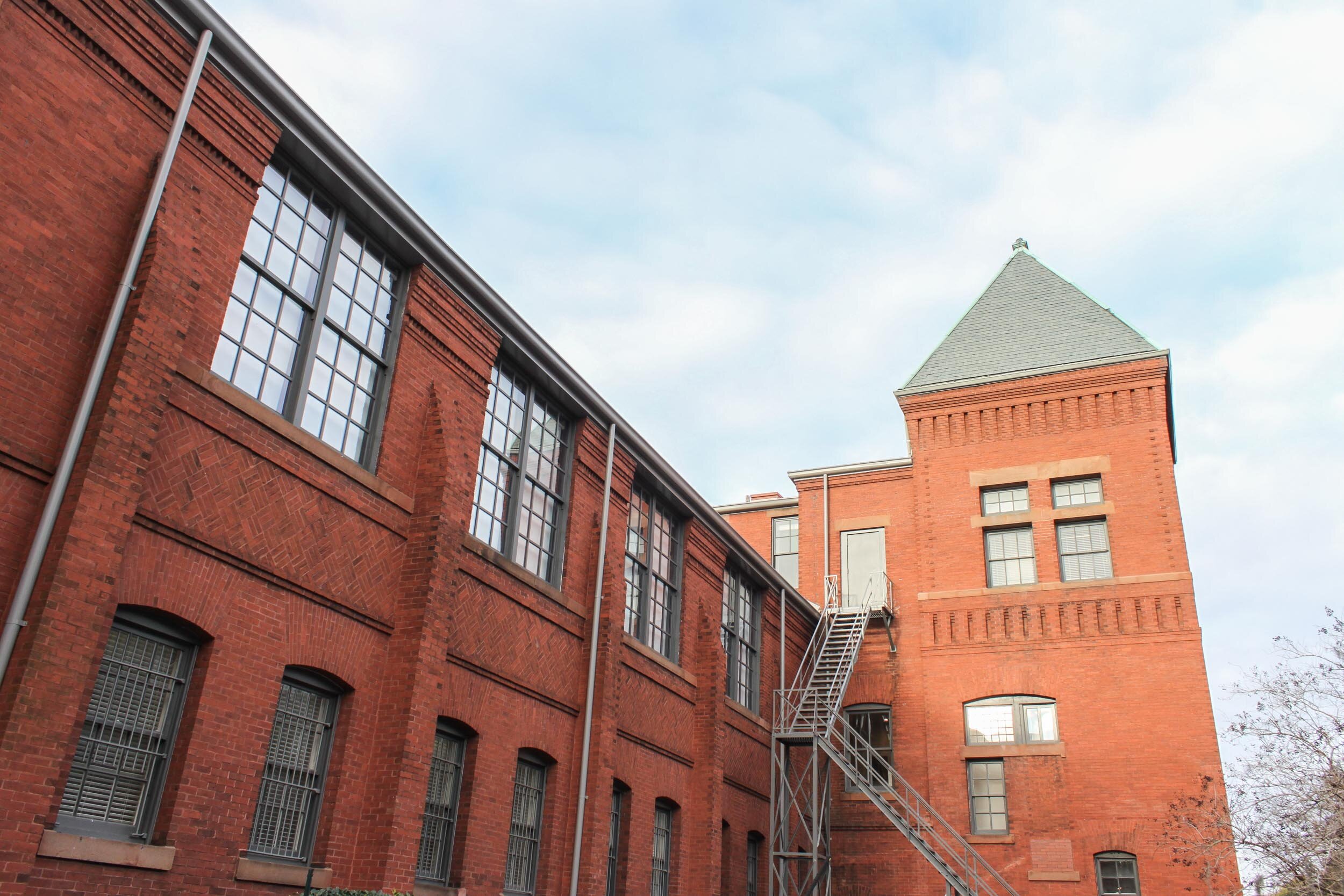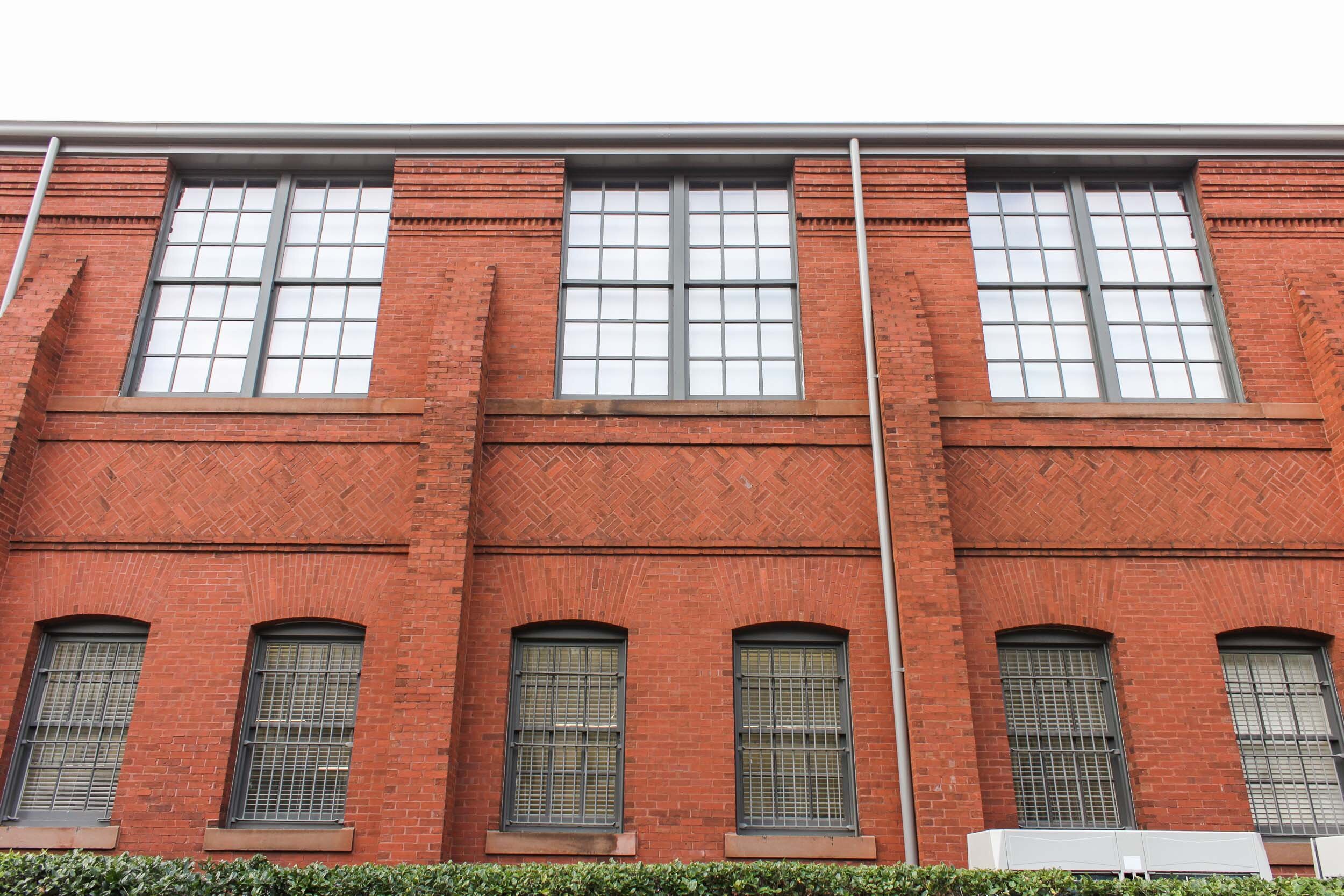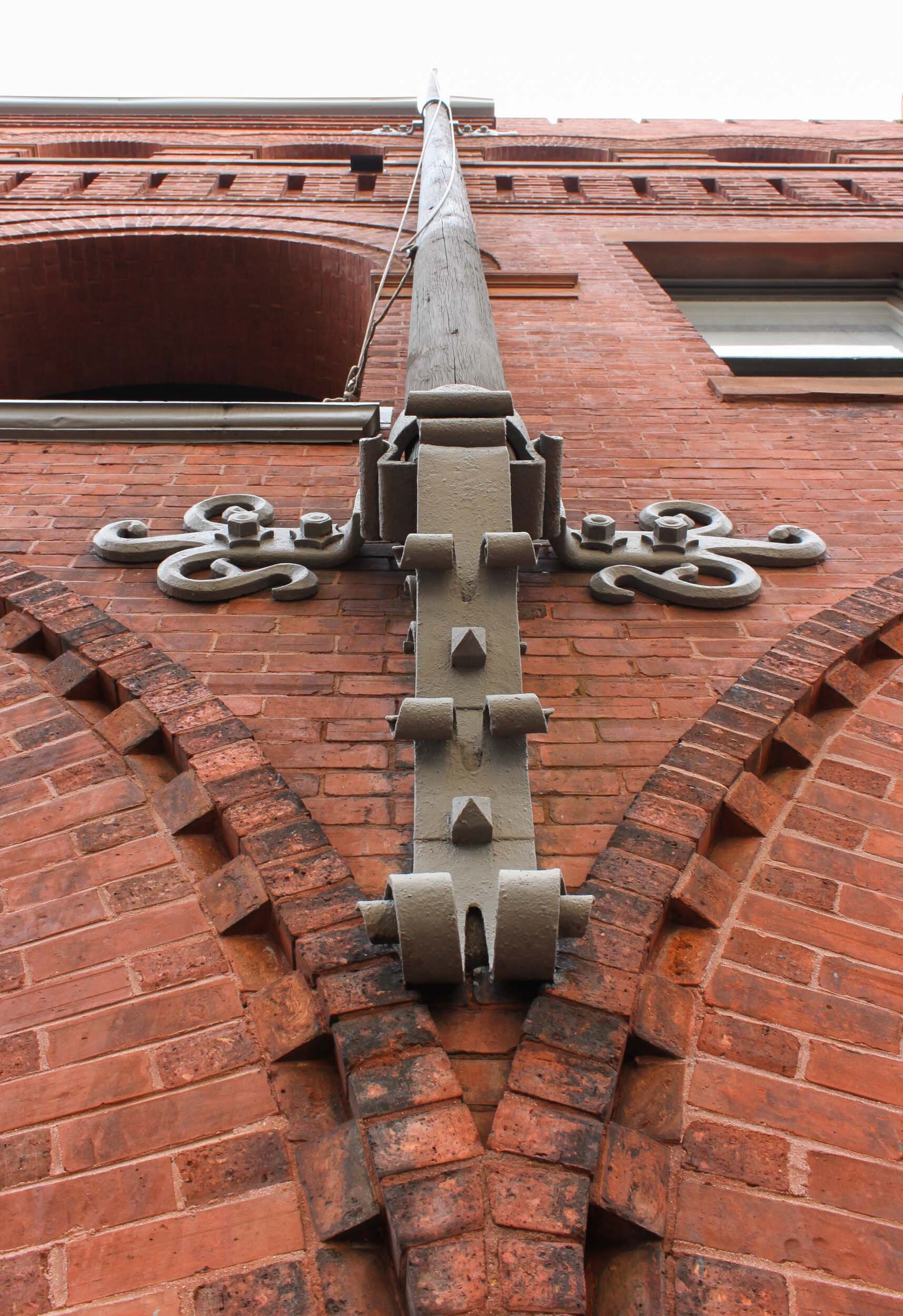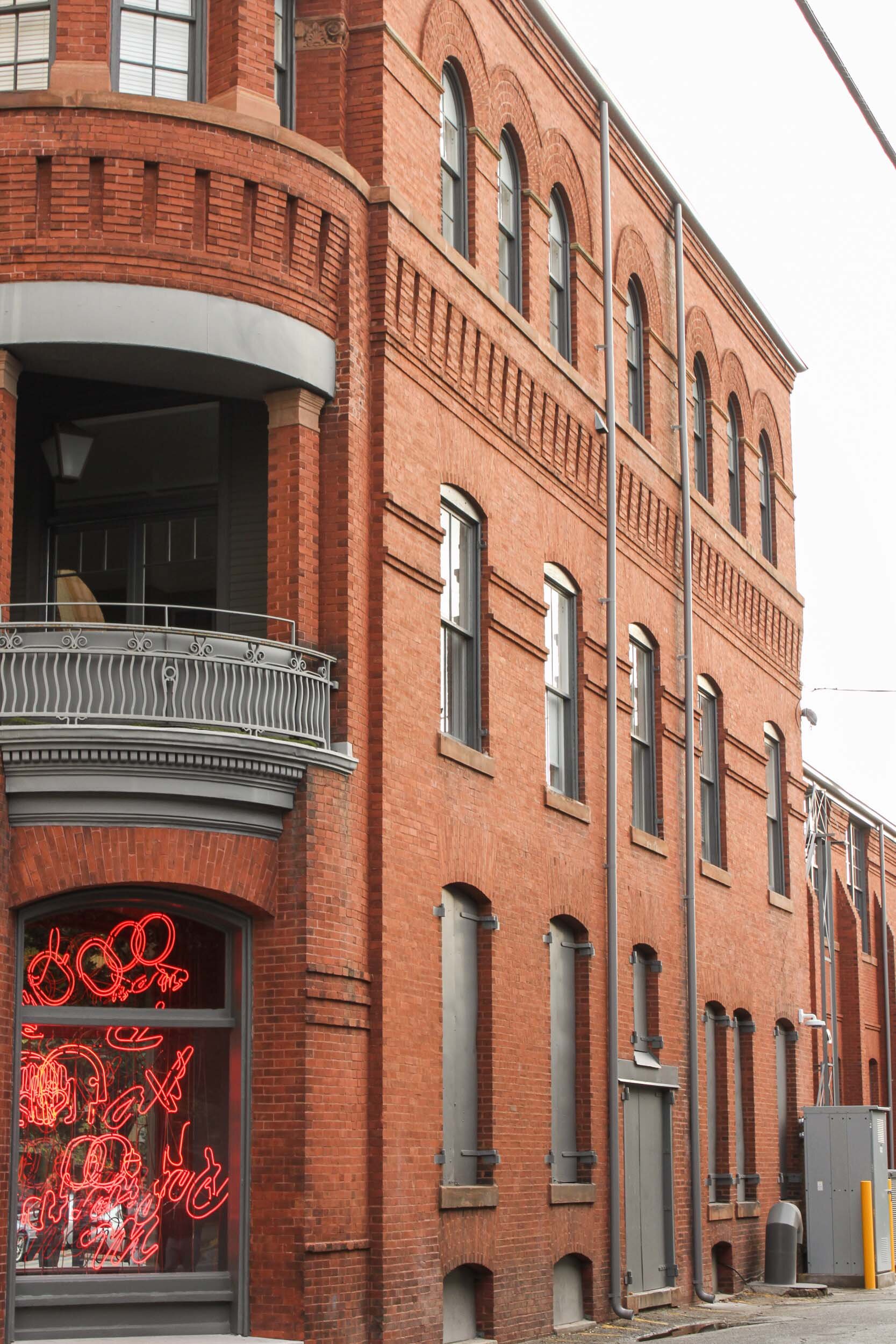masonry restoration
poetter hall, scad - 1892
Savannah, GA
living History
Poetter Hall has stood as a Savannah landmark since it was constructed as the Savannah Volunteer Guard Armory in 1892. This 36,248 square-foot building was designed by renowned Boston architect William Gibbons Preston and contained a drill hall, ballroom, large company rooms, and a guard club. Poetter Hall was the first building acquired by the Savannah College of Art and Design (SCAD) in 1979, and it remains the flagship building of the university. Since SCAD’s acquisition, the building has provided Savannah with an exemplary model of adaptive rehabilitation, and has gained renewed significance as the birthplace of an internationally recognized institution. In acknowledgment of this legacy, and in conjunction with the 40th Anniversary of SCAD, the university sought to completely restore the weathering masonry facade, the foyer, and the main staircase.
The historic masonry required extensive attention, and the Landmark Preservation team performed the following tasks:
Thorough cleaning and removal of biological growth
Selective repointing
Removal of inappropriate repair
Stone crack repair
One particularly significant accomplishment of the exterior restoration was the refinishing of the character-defining cannons flanking the main entrance. These cast iron testaments to the building’s past had much of their detail obscured by layers of paint. The cannons, cast iron straps, and masonry pedestals were all stripped and refinished. To complete the work, four coats of an all-natural stripper were applied to all the elements. Previous paint and sealants were carefully removed, and the surfaces were cleaned using denatured alcohol to remove stripped residue. Cast iron elements were then coated in a two-part epoxy primer followed by two coats of finish. The masonry bases were left un-coated once the existing paint was removed. The cleaned cannons, with details clearly visible once again, continue to remind passersby of the building’s history and mark the entrance for new generations of visitors.
